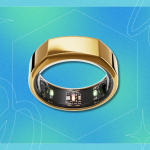
In any other context, astronomers would call this isolated, sunlike star “boring” — as nondescript as its serial number name.
But NASA scientists plucked HD84406 from its obscurity 260 light-years away, giving it an important place in history: The U.S. space agency used it to confirm the optics work on the $10 billion James Webb Space Telescope, the preeminent conservatory in the sky.
With the announcement Wednesday was the release of a crystal clear photo of the star found in the constellation Ursa Major. It’s a little too faint to see with the naked eye on Earth, but through Webb, it’s a beacon of light, flaming red with large spikes.
-
How NASA locked Omicron out of its Webb telescope control room
-
The intrepid Webb space telescope reaches its distant, frigid outpost
-
Looking for new James Webb telescope pictures? You’ll have to wait.
-
If the Webb telescope sunshield doesn’t open, here’s what NASA will do
The telescope has come a long way since its first snapshot in February, showing 18 separate golden blurry blobs representing a star. NASA promised further calibration of the instrument would refine its capability to make the star look like a star.
The new photo was a delivery on that promise. One could easily read the subtext of a midweek news conference:
See? We told you so.
“All the sleepless nights I’ve had and kind of the worries I’ve had, they’re all behind us now, ” said Thomas Zurbuchen, associate administrator for NASA’s science mission directorate.
The telescope captures infrared light, which is normally invisible to human eyes, said Marshall Perrin, Webb’s deputy telescope scientist. Engineers toned the black-and-white data in a red filter to better show off the visual contrast of the star. The sharp pointy structures radiating from the center are the result of Webb’s hexagonal mirror segments and the arms that hold the secondary mirror. They affect the way the light travels, causing diffraction.
“You see that most intensely when you have a very bright star,” Perrin told Mashable during the briefing.
The Webb team finished the so-called “fine-phasing” stage of telescope alignment on March 11. NASA officials said every optical measurement they have checked and tested thus far is performing well or better than expected. No critical issues have come up that could taint future photography.
Webb, a collaboration between NASA, the European Space Agency, and the Canadian Space Agency, will observe some of the oldest, faintest light in the universe. The powerful telescope will study a period less than 300 million years after the Big Bang, when many of the first stars and galaxies were born. Scientists also will use it to peer into the atmospheres of planets outside our solar system, called exoplanets. Discoveries of water and methane, for example, could be signs of potential habitability or biological activity — main ingredients of life.
Astronomers anticipate the telescope will facilitate a golden age in our understanding of the cosmos, providing never-before-seen snapshots of space billions of light-years away for 10 to 20 years.

Credit: NASA/Chris Gunn
The photo released Wednesday was meant as a proof of concept. The ones coming this June, in full-resolution with scientific data, will be meant to dazzle. NASA hasn’t disclosed what celestial targets will be among the first photos.
But this first sharp look at deep space has already made scientists giddy with excitement. Webb’s optics and Near-Infrared Camera are so sensitive that galaxies and other stars appear in the background of the HD84406 shot.
“There’s no way that Webb can look for 2,000 seconds at any point in the sky and not go incredibly deep.”
“You can’t help but see those thousands of galaxies behind it. They’re really gorgeous,” said Jane Rigby, a project scientist. “There’s no way that Webb can look for 2,000 seconds at any point in the sky and not go incredibly deep.”
NASA has more work to do to get the observatory in shape for performing all of its scientific functions. Over the next six weeks, the team will align other instruments on the observatory.
But they’re priming space lovers for fireworks.
“This is going to be the future from now on,” Rigby said. “Wherever we look, it’s a deep field.”
Powered by WPeMatico






